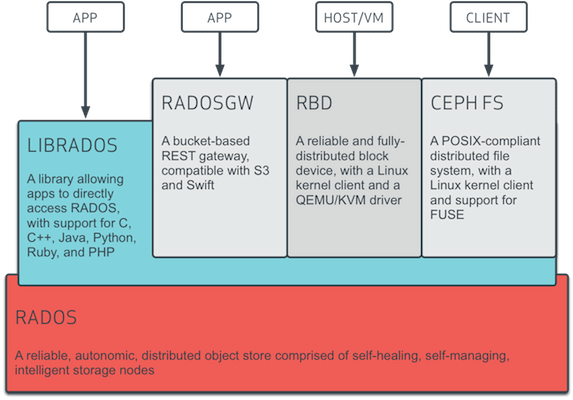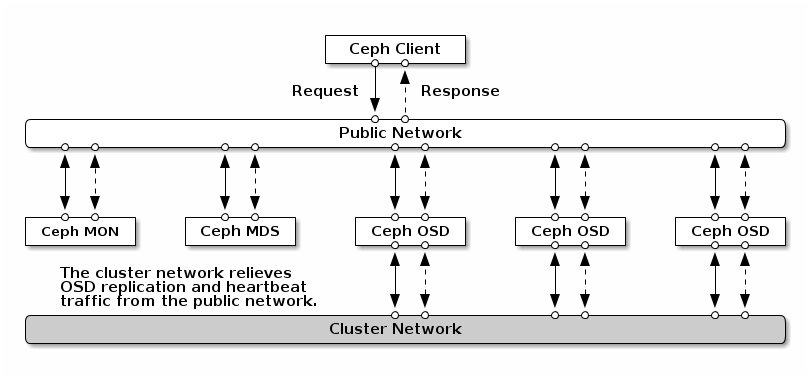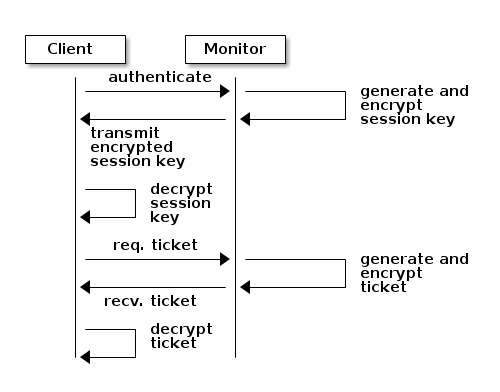- To the Ceph client interface that reads and writes data, a Ceph storage cluster appears as a simple pool where the client stores data. However, the storage cluster performs many complex operations in a manner that is completely transparent to the client interface. Ceph clients and Ceph object storage daemons, referred to as Ceph OSDs, or simply.
- Ceph-fuse is a FUSE (“Filesystem in USErspace”) client for Ceph distributed file system. It will mount a ceph file system specified via the -m option or described by ceph.conf (see below) at the specific mount point. See Mount CephFS using FUSE for detailed information. The file system can be unmounted with: or by sending SIGINT to the ceph.
- Bug 1423459 - ceph-ansible: 'wait for ceph.client.admin.keyring exists' step fails during cluster creation using RHEL ISO.
What is a Ceph cluster?
Each Tuesday, we will be releasing a tech tip video that will give users information on various topics relating to our Storinator storage servers.This week. I presume owncloud solution can use ceph as storage backend. Ignazio Il Sab 21 Mar 2020, 05:45 Konstantin Shalygin <k0ste(a)k0ste.ru> ha scritto: On 3/18/20 7:06 PM, Ignazio Cassano wrote.
A Ceph storage cluster consists of the following types of daemons:
- Cluster monitors (
ceph-mon) that maintain the map of the cluster state, keeping track of active and failed cluster nodes, cluster configuration, and information about data placement and manage daemon-client authentications. - Object storage devices (
ceph-osd) that store data on behalf of Ceph clients. Additionally, they handle data replication, erasure coding, recovery, rebalancing, monitoring and reporting. - Managers (
ceph-mgr) that maintain cluster runtime metrics, enable dashboarding capabilities and provide an interface to external monitoring systems. - Metadata servers (
ceph-mds) that store metadata on behalf of the Ceph File System, mapping filenames and directories of the file system to RADOS objects and allow the use of POSIX semantics to access the files.
Ceph stores data as objects within logical storage pools. In order to achieve scalability, rebalancing and recovery capabilities, Ceph shards the pools into placement groups. The CRUSH algorithm then defines the placement group for storing an object and thereafter calculates which Ceph OSD Daemon should store the placement group.
Notice
This document is for a development version of Ceph.
The Ceph client tools and libraries can be natively used on Windows. This avoidsthe need of having additional layers such as iSCSI gateways or SMB shares,drastically improving the performance.
Prerequisites¶
Supported platforms¶

Windows Server 2019 and Windows Server 2016 are supported. Previous WindowsServer versions, including Windows client versions such as Windows 10, mightwork but haven’t been tested.
Windows Server 2016 does not provide Unix sockets, in which case some commandsmight be unavailable.

Secure boot¶
The WNBD driver hasn’t been signed by Microsoft, which means that Secure Bootmust be disabled.
Dokany¶
In order to mount Ceph filesystems, ceph-dokan requires Dokany to beinstalled. You may fetch the installer as well as the source code from theDokany Github repository: https://github.com/dokan-dev/dokany/releases

Ceph Client Windows
The minimum supported Dokany version is 1.3.1. At the time of the writing,Dokany 2.0 is in Beta stage and is unsupported.

Unlike WNBD, Dokany isn’t included in the Ceph MSI installer.
MSI installer¶
Using the MSI installer is the recommended way of installing Ceph on Windows.It can be downloaded from here: https://cloudbase.it/ceph-for-windows/

As mentioned earlier, the Ceph installer does not include Dokany, which hasto be installed separately.
A server reboot is required after uninstalling the driver, otherwise subsequentinstall attempts may fail.
The following project allows building the MSI installer:https://github.com/cloudbase/ceph-windows-installer. It can either use prebuiltCeph and WNBD binaries or compile them from scratch.
Manual installation¶
Ceph Client Install
The following document describes the build process and manual installation:https://github.com/ceph/ceph/blob/master/README.windows.rst
Configuration¶
Ceph Client Node
Please check the Windows configuration sample to get started.
You’ll also need a keyring file. The General CephFS Prerequisites page provides asimple example, showing how a new CephX user can be created and how its secretkey can be retrieved.
For more details on CephX user management, see the Client Authenticationand User Management.